
7 Common Car Tech Features and What They Do
Advanced driver assistance systems do amazing things. But they can't do all the driving—not yet.
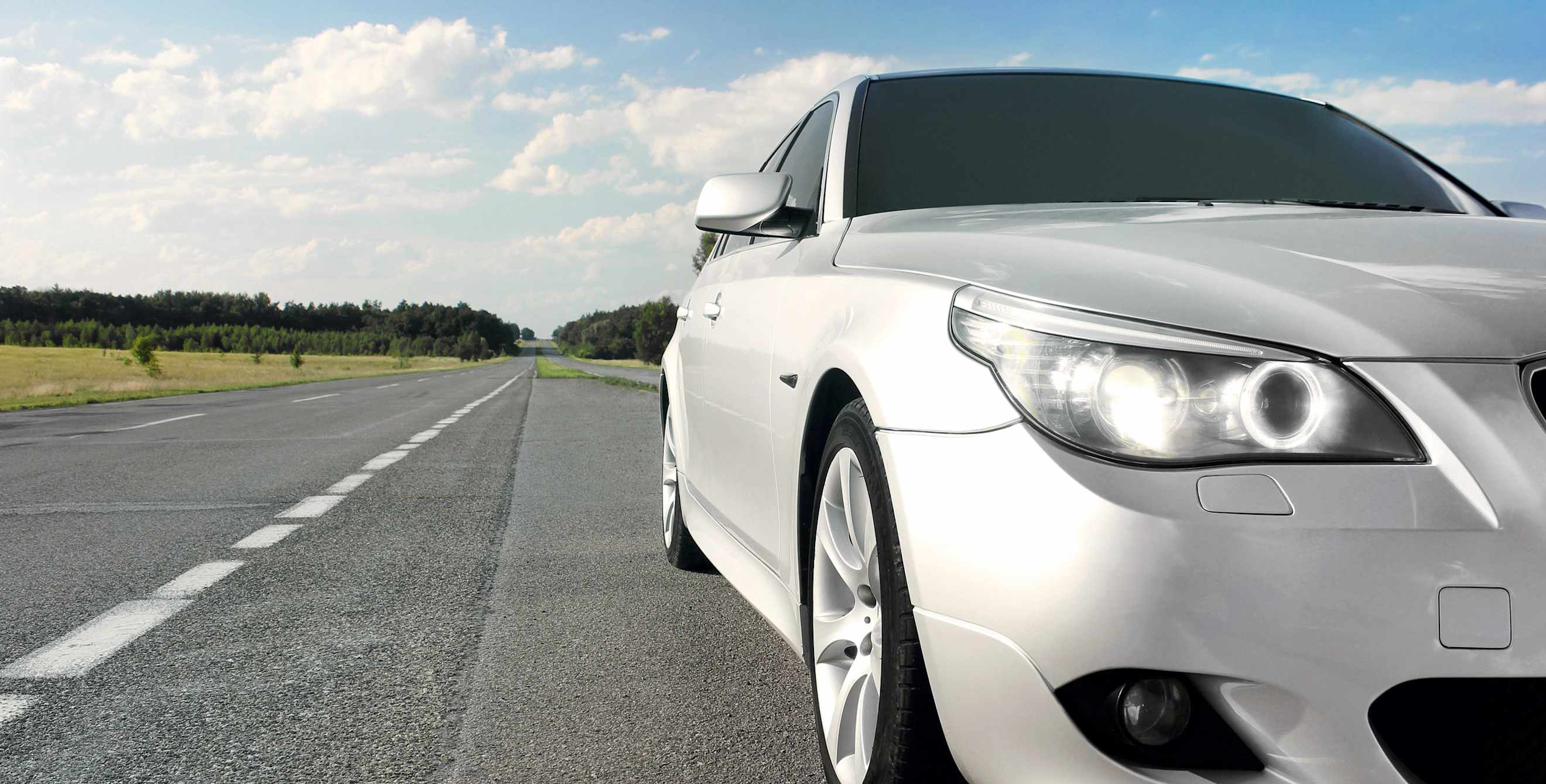
The next vehicle you buy might not fly, but chances are it will have features that would have seemed like futuristic fantasies just a few years ago. More than 90 percent of new vehicles available in the United States today include at least one form of advanced driver assistance systems (ADAS)—automatic emergency braking, collision warnings, and the like. And those systems are growing more sophisticated—and their use more widespread—every year.
As common as they are these days, though, ADAS can also be a source of confusion. One reason is that different manufacturers may refer to a single technology by a bewildering array of proprietary names. The absence of consistent terminology makes it difficult for consumers to know which features a given vehicle has and how those features work. Technologies with similar names might actually do different things: One car will just warn you about an impending collision, while another will actually hit the brakes.
For such systems to live up to their full potential, clarity is crucial. Here are seven of the most common ADAS technologies, using standardized names proposed by AAA, with explanations of what they can—and, more importantly, what they can't—do.

Automatic emergency braking uses radars and/or cameras to prevent collisions.
Automatic Emergency Braking
AKA: Active Brake Assist, Collision Mitigation Braking System, Collision Prevention Assist Plus, Forward Automatic Braking, Forward Collision Avoidance Assist, Forward Collision Mitigation, Forward Collision Warning, Forward Emergency Braking, Front Pedestrian Braking, Intelligent Brake Assist, Pre-Collision Assist, Pre-Collision System, Pre-Safe Brake; Smart Brake Support
More than 90 percent of cars available in the United States have automatic emergency braking. The system uses either radar or a combination of radar and cameras to detect potential obstacles ahead of you and apply the brakes. But not all these systems are created equal. "Some are designed to do everything within the laws of physics to stop your car," says Greg Brannon, director of Automotive Engineering and Industry Relations at AAA National. "Others are designed just to mitigate the collision."
What's more, while some systems can only detect other vehicles in your path, others are capable of responding to cyclists, pedestrians, and animals. In all cases, these systems respond best to objects in motion; they are not good at responding to, say, a lamppost or a mailbox. And in no case are they meant to do all the braking for you. "You should not be relying on these systems to stop your car," Brannon says. "They are meant to be a backstop for drivers engaged in the task of driving."
Lane Keeping Assistance
AKA: Active Lane Keeping Assist, Active Steering Assist, Intelligent Lane Intervention, Lane Assist, Lane Keep Assist, Lane Keeping Aid, Lane Keeping System, LaneSense
In 2023, about 85 percent of new cars nationwide had some form of lane keeping assistance. The technology uses camera-based sensors to detect lane markings. If it "sees" that you're drifting unintentionally out of your lane, it springs into action. Some versions steer your vehicle back to center when they sense you're about to cross a line. Others try to keep you centered in your lane at all times (which can lead to a disconcerting ping-pong effect). The systems are smart enough not to intervene when you're purposely changing lanes.
Because lane keeping assistance relies on cameras, it is less effective at night. Add rain or snow to low-light conditions, and the system may cease to function altogether, Brannon says. More importantly, the technology isn't meant to do the steering for you, and it's certainly not infallible. It does not work well in construction zones or on other stretches of road where the lane markings are unclear or shift suddenly. "Don't get lulled into a false sense of security," Brannon says. "Lane keeping assistance doesn't mean you have a self-driving car."
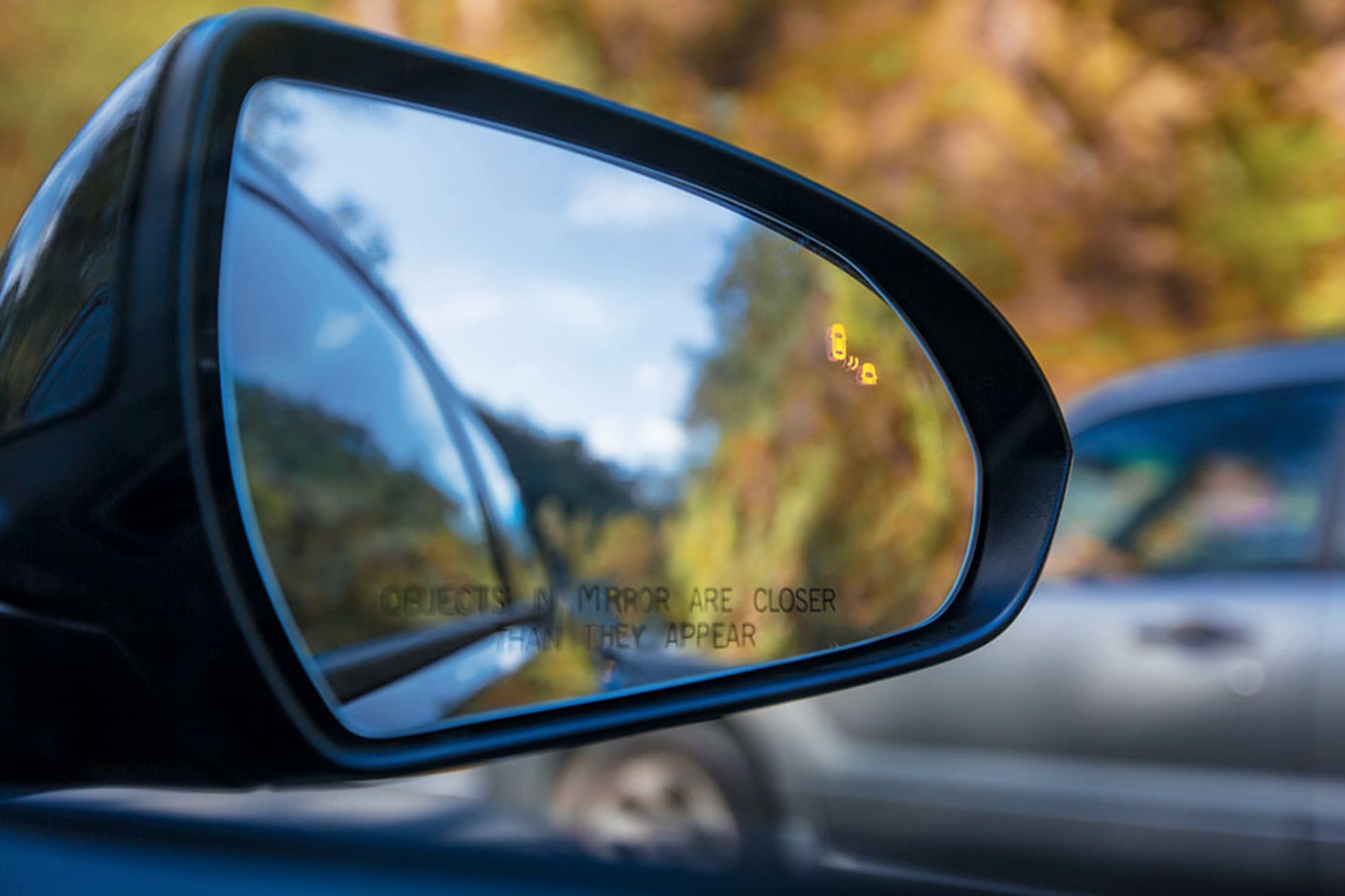
Blind spot warning systems rely on rear-facing cameras built into the sideview mirrors.
Blind Spot Warning
AKA: Blind Spot Assist, Blind Spot Detection, Blind Spot Information, Blind Spot Intervention, Blind Spot Monitor, Lane Change Assistant, Smart Blind Spot Detection
Available in more than 70 percent of new cars in this country, blind spot warning systems rely on rear-facing cameras built into the sideview mirrors, frequently supplemented by radar systems at the rear of the car. These technologies keep watch on the road behind you and alert you when they detect approaching vehicles in adjacent lanes. In a lot of these systems, the alert appears as an amber light near the side mirror. However, if you switch on your turn signal to change lanes, many systems augment their visual alert by emitting an audible beep or by vibrating your seat.
The larger the object and slower it's moving relative to your speed, the easier it is for these systems to detect. This means blind spot warning systems are better at detecting cars than motorcycles, which are not only smaller but often moving too quickly for easy detection. Another important note: These systems only issue warnings. The car itself will not take action. "You still need to check your mirrors and use your signals," Brannon says.

Adaptive cruise control adjusts speed to maintain a constant gap between vehicles.
Adaptive Cruise Control
AKA: Active Distance Assist Distronic, Advanced Smart Cruise Control, All-Speed Dynamic Cruise Control, Camera-Based Cruise Control, Distance Pilot Distronic, Dynamic Radar Cruise Control, Intelligent Cruise Control, Smart Cruise Control, Traffic-Aware Cruise Control
Adaptive cruise control has been around for more than a decade, over which time it has slowly made inroads into the marketplace. The radar-based system is a standard feature in just over 92 percent of new vehicles in the U.S. Unlike standard cruise control, which keeps your vehicle at a constant speed, adaptive cruise control adjusts your speed to maintain a constant gap between you and the vehicle in front.
The systems are user adjustable, so you can specify the separation between you and the car ahead. (AAA recommends at least three seconds.) "They're designed to smooth patterns and ease some of the stress of driving on the interstate," Brannon says. "And our research has found that they work very well."
While some systems are capable of bringing your vehicle to a complete stop, not all of them can. "Adaptive cruise control does not necessarily mean you have automatic braking," Brannon says. "Don't assume it will slow you down if the vehicle ahead slams on its brakes."
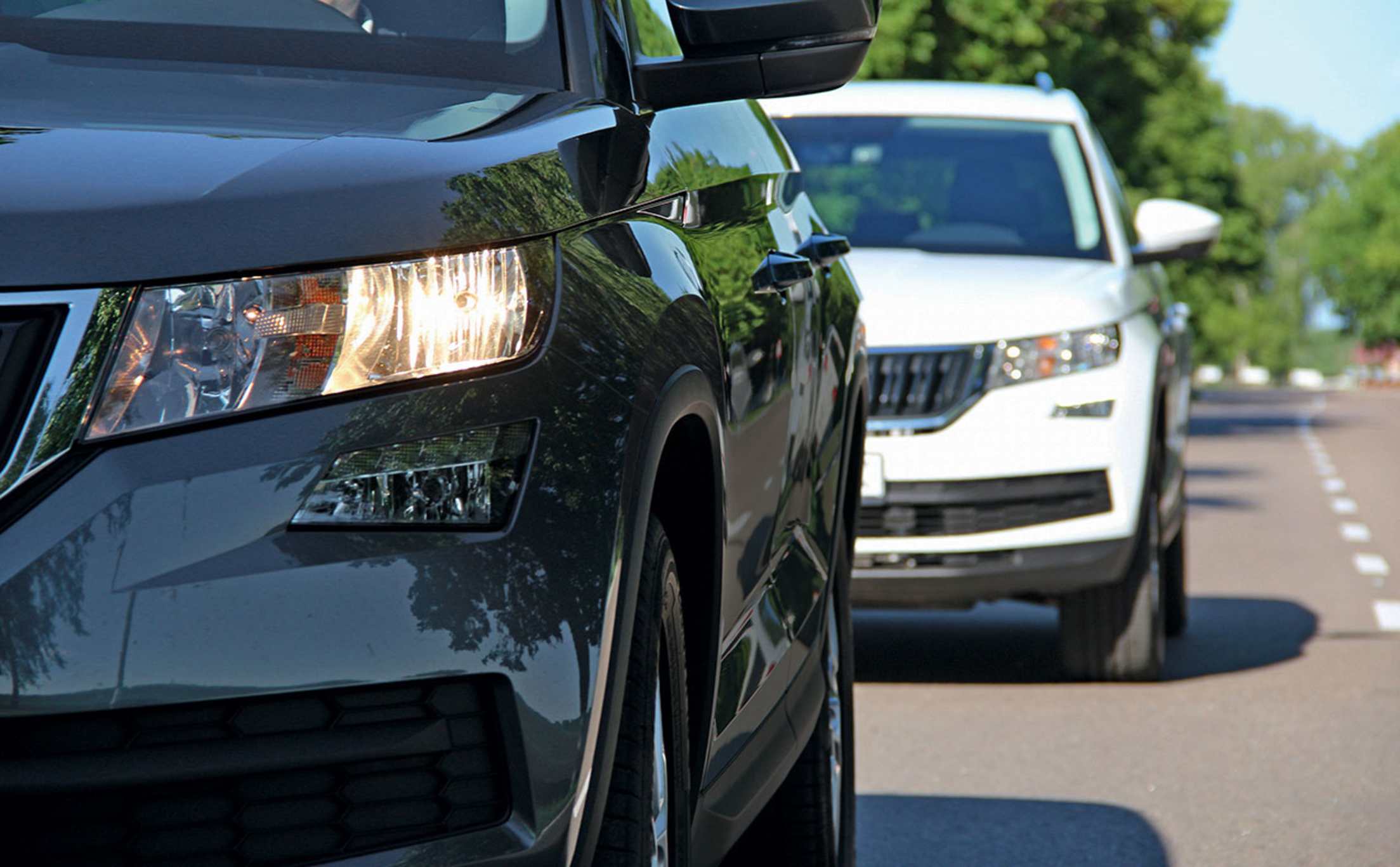
Forward collision and rear cross traffic collision warning systems are often paired with automatic emergency braking.
Forward Collision Warning, Rear Cross Traffic Collision Warning
AKA: Backup Collision Intervention, Collision Prevention Assist, Cross Traffic Warning, Cross Path Detection, Forward Collision Alert, Moving Object Detection, Rear Cross Path Detection, Rear Cross Traffic Alert, Rear Cross Traffic Assist, Rear Cross Traffic Monitor, Rear Traffic Alert, Rear Traffic Monitor, Reverse Traffic Detection
Forward collision warning systems will be standard in all new vehicles sold nationwide as of 2029. They watch the road ahead with cameras and radar-based sensors and alert you to potential impacts with vehicles ahead of you.
However, these systems are not especially adept at detecting cyclists and pedestrians. And none of them are as good as you might like when you're driving at full speed and the vehicle ahead of you changes lanes suddenly to reveal a stationary object in your path.
While these are primarily warning systems, they are often paired with automatic emergency braking, which will actually respond to the obstacles ahead.
Rear cross traffic collision warning systems perform a similar function when you're backing up; they use radar, sonar, and in some cases cameras to detect vehicles coming from the side as you're in reverse. Again, the smaller the object and the faster it's moving, the harder it is for these systems to detect.
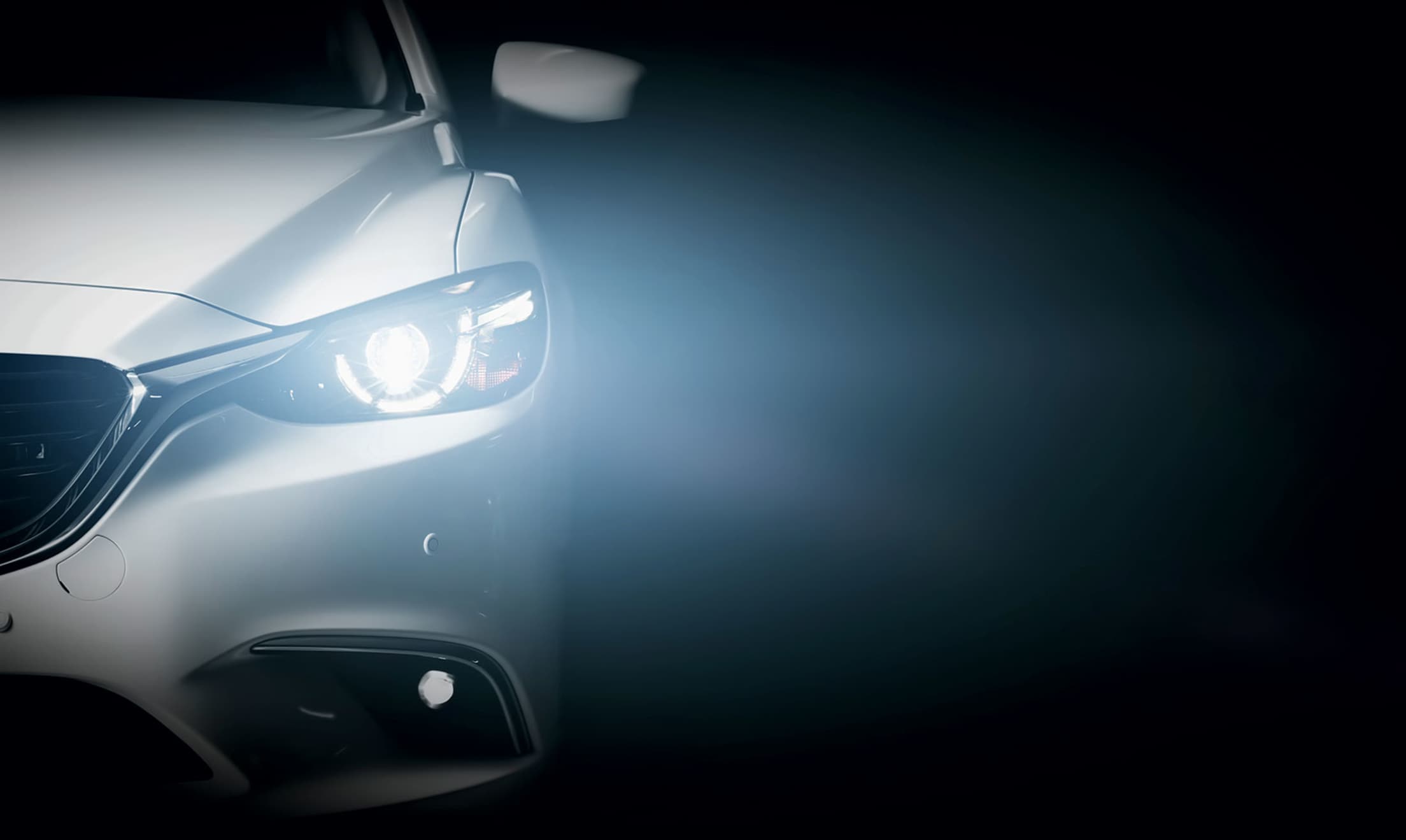
Automatic high beam systems use light sensors to monitor driving conditions and adjust headlight settings accordingly.
Automatic High Beams
AKA: Active High Beam Control, Adaptive Highbeam Assist, Auto High Beam, High Beam Assist, High Beam Control, IntelliBeam, Intelligent High Beam, Light Assist
Automatic high beams first appeared in the 1950s and are now available in a majority of new vehicles nationwide. These systems use light sensors to monitor driving conditions and adjust headlight settings accordingly, switching to high beams in low-light settings, then dimming those same beams when that's called for, in response to oncoming traffic. In the United States, almost two-thirds of drivers report that they do not use their high beams manually—a troublesome statistic, Brannon says, given that low beams have been shown to be ineffective on dark roads at speeds of 45 mph or greater. That makes automatic high beams an especially valuable tool.
The technology can be fooled: If your lights hit a reflective surface, the system might interpret that as an oncoming vehicle. If the sensors get cloudy or caked in mud, their effectiveness may be minimized. "It is incumbent on drivers to check that these systems are working properly," Brannon says.
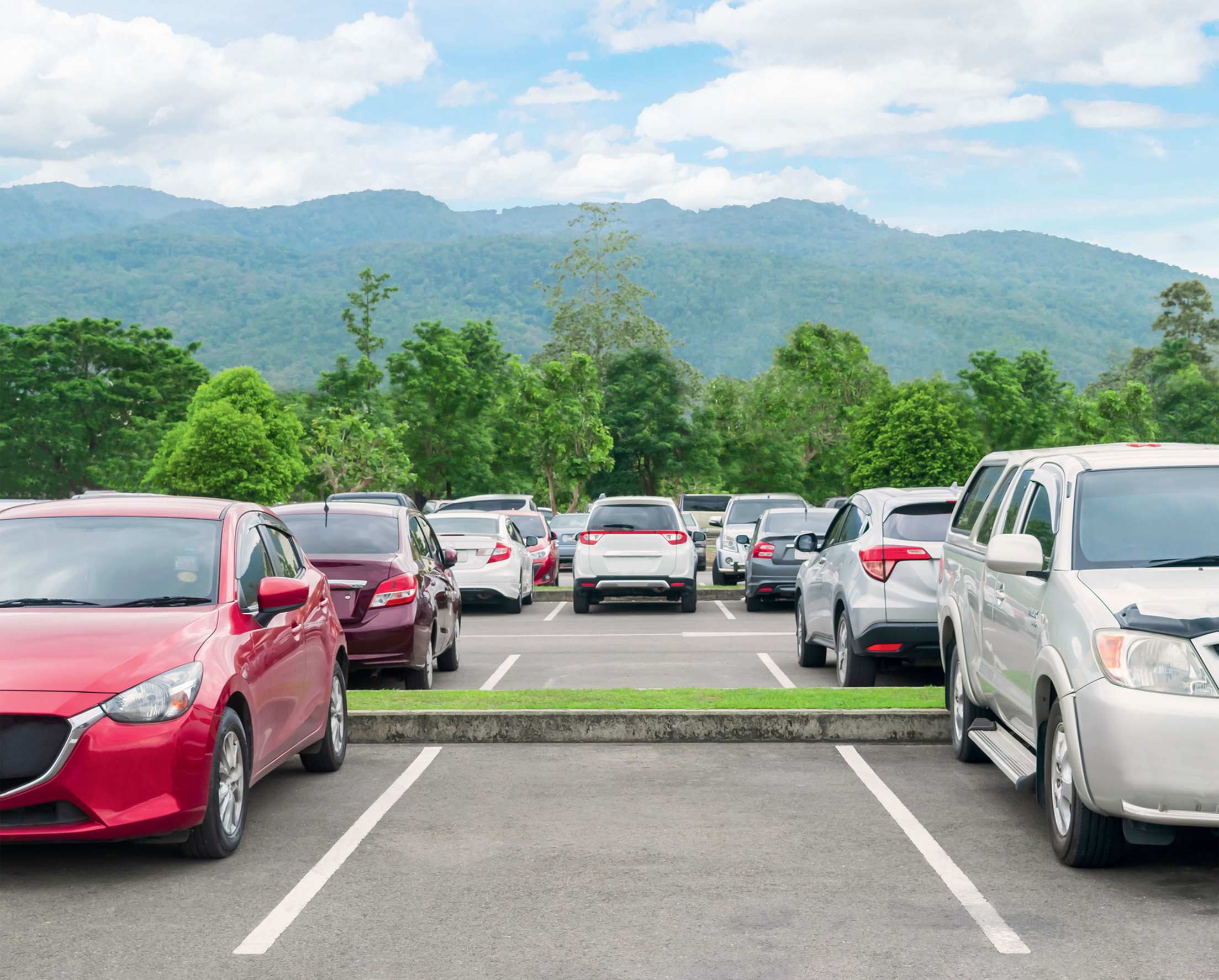
To utilize active parking assistance, you must turn on the function when you begin to look for a spot.
Active Parking Assistance
AKA: Active Park Assist, Active Parking Assist, Automatic Parking Assist, Intelligent Park Assist, Parallel and Perpendicular Park Assist, Park Assist, Park Assist Pilot, Parking Assistant, Parking Assistant Plus, Parking Pilot, Parking Steering Assistant, ParkSense
Increasingly common as an optional upgrade, active parking assistance uses sonar, radar, and cameras to help you pull safely into a parking space. What varies is the degree to which these systems get involved in the parking process itself. Some will not only handle the steering and braking, they'll also do the shifting—moving the car from forward to reverse or vice versa—as needed. Others will do the steering only, leaving the driver to shift and brake. "There are a lot of different flavors," Brannon says. "As a driver, you really need to know exactly what the vehicle is relying on you to do." Active parking assistance systems do not engage automatically; you have to turn them on when you start looking for a spot. They'll help you identify whether a spot is big enough to fit your car, and they usually do a very nice job of maneuvering the vehicle into it.
"Typically, these systems do an even better job than good drivers," Brannon says. "They hit the curb less frequently, and they generally require fewer adjustments after that initial park."
Active Driving Assistance
Super Cruise. Autopilot. ProPilot Assist. The names sound supercool. Too bad they've also kicked up a cloud of confusion about technologies that AAA believes should be referred to as active driving assistance. Whatever you call them, these technologies combine aspects of adaptive cruise control and lane keeping assistance—essentially steering, braking, and accelerating for you as conditions permit. They work well on the open road and in stop-and-go highway traffic, Brannon says, but less well in moderate traffic where gaps between vehicles change frequently. And what they can't do in any circumstance—regardless of what all those spiffy names suggest—is take over all the driving for you. Unfortunately, many drivers won't understand the limitations until it's too late. "We can't control the marketers," Brannon says. "But the nomenclature is a safety issue."
Make smart choices, whether you're buying, selling, insuring, maintaining, or repairing a vehicle.